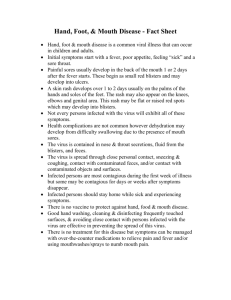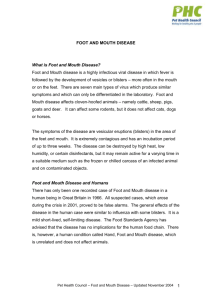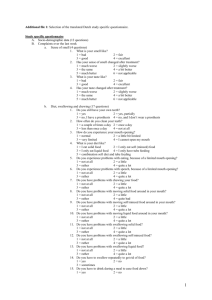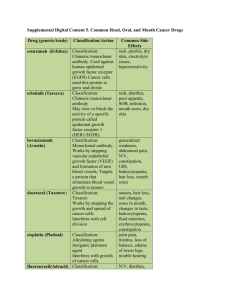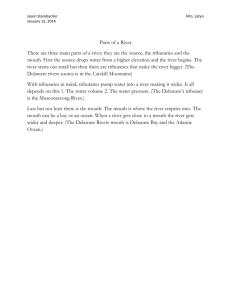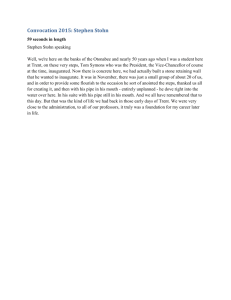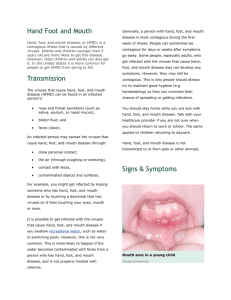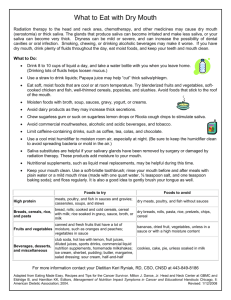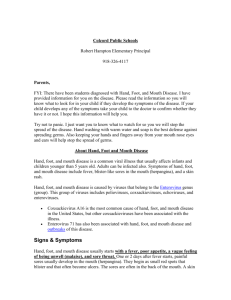Hand Foot & Mouth Disease? Please click here.
advertisement
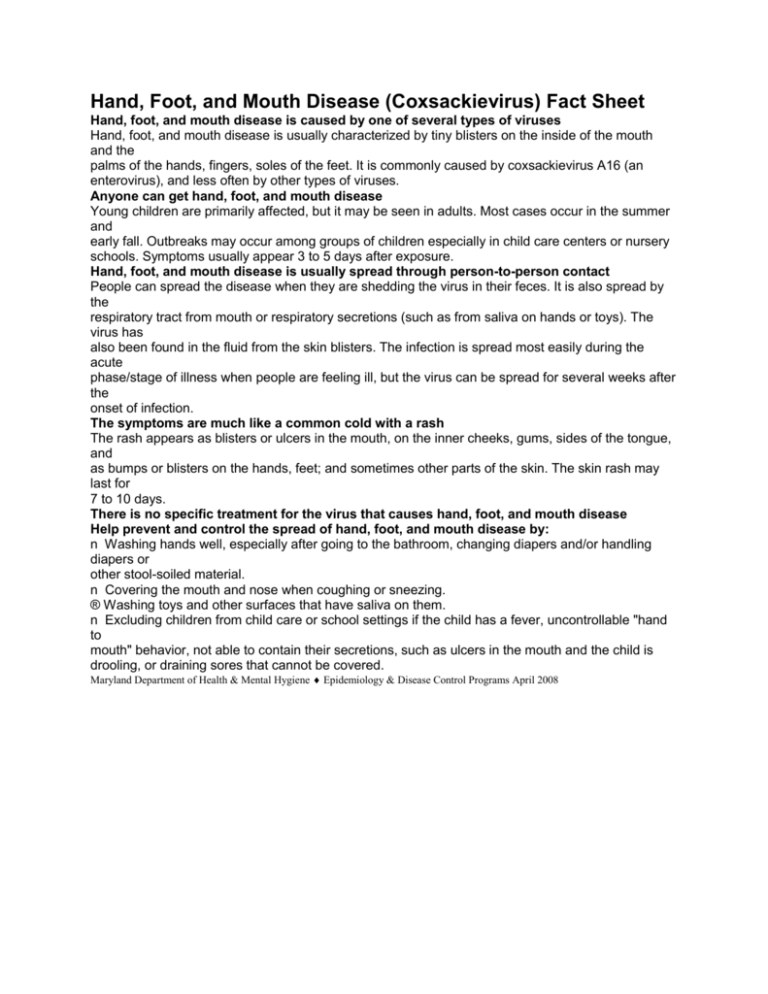
Hand, Foot, and Mouth Disease (Coxsackievirus) Fact Sheet Hand, foot, and mouth disease is caused by one of several types of viruses Hand, foot, and mouth disease is usually characterized by tiny blisters on the inside of the mouth and the palms of the hands, fingers, soles of the feet. It is commonly caused by coxsackievirus A16 (an enterovirus), and less often by other types of viruses. Anyone can get hand, foot, and mouth disease Young children are primarily affected, but it may be seen in adults. Most cases occur in the summer and early fall. Outbreaks may occur among groups of children especially in child care centers or nursery schools. Symptoms usually appear 3 to 5 days after exposure. Hand, foot, and mouth disease is usually spread through person-to-person contact People can spread the disease when they are shedding the virus in their feces. It is also spread by the respiratory tract from mouth or respiratory secretions (such as from saliva on hands or toys). The virus has also been found in the fluid from the skin blisters. The infection is spread most easily during the acute phase/stage of illness when people are feeling ill, but the virus can be spread for several weeks after the onset of infection. The symptoms are much like a common cold with a rash The rash appears as blisters or ulcers in the mouth, on the inner cheeks, gums, sides of the tongue, and as bumps or blisters on the hands, feet; and sometimes other parts of the skin. The skin rash may last for 7 to 10 days. There is no specific treatment for the virus that causes hand, foot, and mouth disease Help prevent and control the spread of hand, foot, and mouth disease by: n Washing hands well, especially after going to the bathroom, changing diapers and/or handling diapers or other stool-soiled material. n Covering the mouth and nose when coughing or sneezing. ® Washing toys and other surfaces that have saliva on them. n Excluding children from child care or school settings if the child has a fever, uncontrollable "hand to mouth" behavior, not able to contain their secretions, such as ulcers in the mouth and the child is drooling, or draining sores that cannot be covered. Maryland Department of Health & Mental Hygiene Epidemiology & Disease Control Programs April 2008
